We offer helical hoses designed to deliver durability, flexibility, and excellent performance across demanding industrial applications. Our hoses ensure efficient fluid transfer, abrasion resistance, and long-lasting strength. With precision engineering and trusted quality, we provide solutions that meet your operational needs and industry standards.
Durable Construction: Each helical hose is engineered with reinforced materials, offering resilience against high pressure and ensuring consistent performance in industrial settings for long-term reliability.
Enhanced Flexibility: Designed with a helical structure, our hoses provide superior flexibility, making installation easier while maintaining strength and efficient operation under tough conditions.
Wide Applications: From chemical transfer to mechanical use, helical hoses serve multiple industries, offering adaptability and proven performance across varied demanding work environments.
Reliable Resistance: Our hoses resist abrasion, pressure, and environmental stress, ensuring safe, efficient, and dependable operations for industrial, hydraulic, and mechanical applications worldwide.
We offer a range of material options for both the hose wall and the helical reinforcement. This allows us to tailor the hose’s resistance to chemicals, temperature extremes, abrasion, and UV exposure. Whether you need something for corrosive fluids or high-temperature applications, we’ll select the ideal materials for maximum performance and longevity.
We offer numerous end connection options, including camlocks, flanges, threaded fittings, and quick-disconnect couplings. This allows us to seamlessly integrate the helical hose into your specific machinery or piping system. We ensure a secure, leak-proof connection that is compatible with your existing setup, simplifying installation and enhancing safety.
We can provide helical hoses in a wide variety of internal diameters and custom lengths. This ensures a precise fit for your existing system, optimizing flow rates and minimizing pressure drops. From short connectors to extensive runs, we’ll work with you to determine the exact dimensions required for seamless integration and efficient operation.
We can customize the helical reinforcement‘s material and pitch. The pitch, or spacing, of the helix affects flexibility and crush resistance. A tighter pitch provides greater crush resistance, while a wider pitch enhances flexibility. We’ll optimize these factors to balance your needs for durability, maneuverability, and desired flow characteristics.
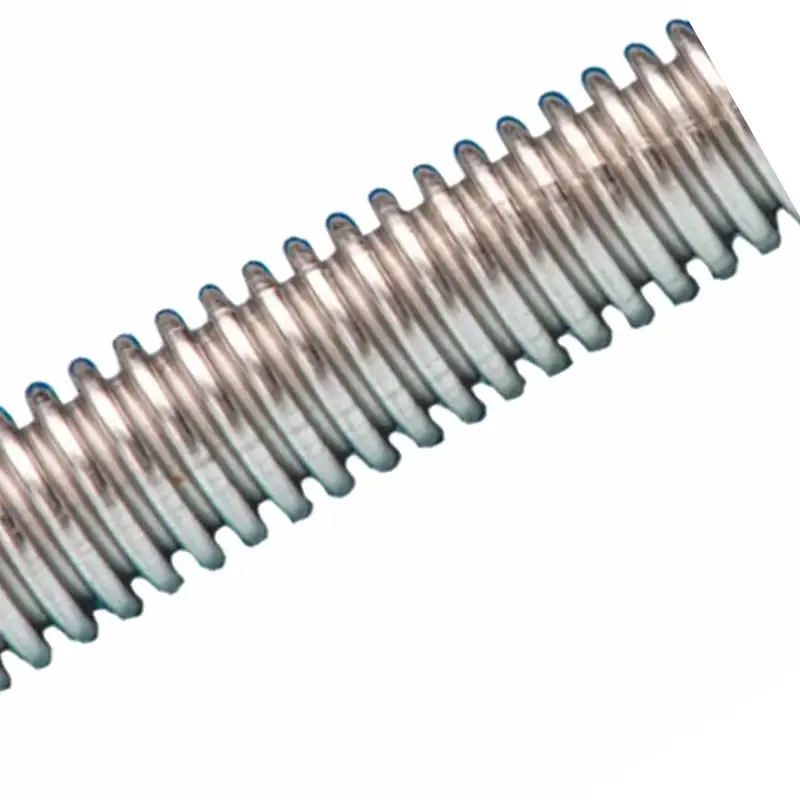
We offer a specialized range of low-pressure helical hoses, perfect for applications where flexibility and light weight are paramount. These hoses feature a robust helical reinforcement, often integrated into the wall, providing excellent crush resistance while maintaining superb maneuverability. Ideal for suction, discharge, and transfer of various media in less demanding environments, they offer a cost-effective and efficient solution.
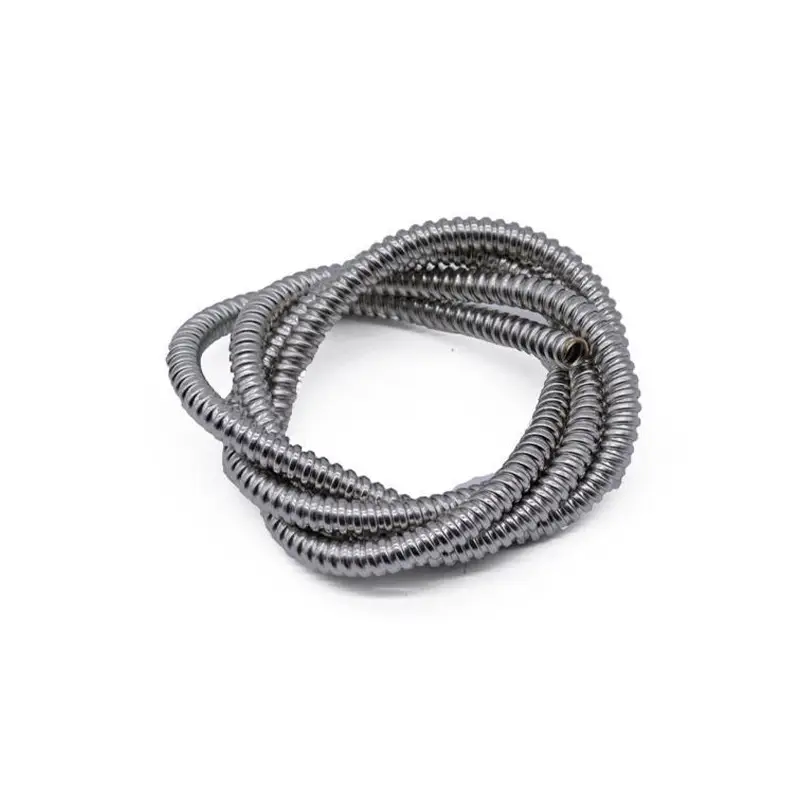
We offer a comprehensive range of flexible spiral helical hoses, renowned for their exceptional flexibility and durability. Designed with a distinct helical reinforcement, these hoses provide superior crush resistance and maintain optimal flow even in challenging bending applications. Ideal for industries requiring easy maneuverability and reliable performance, our hoses ensure efficient material transfer and prolonged service life.
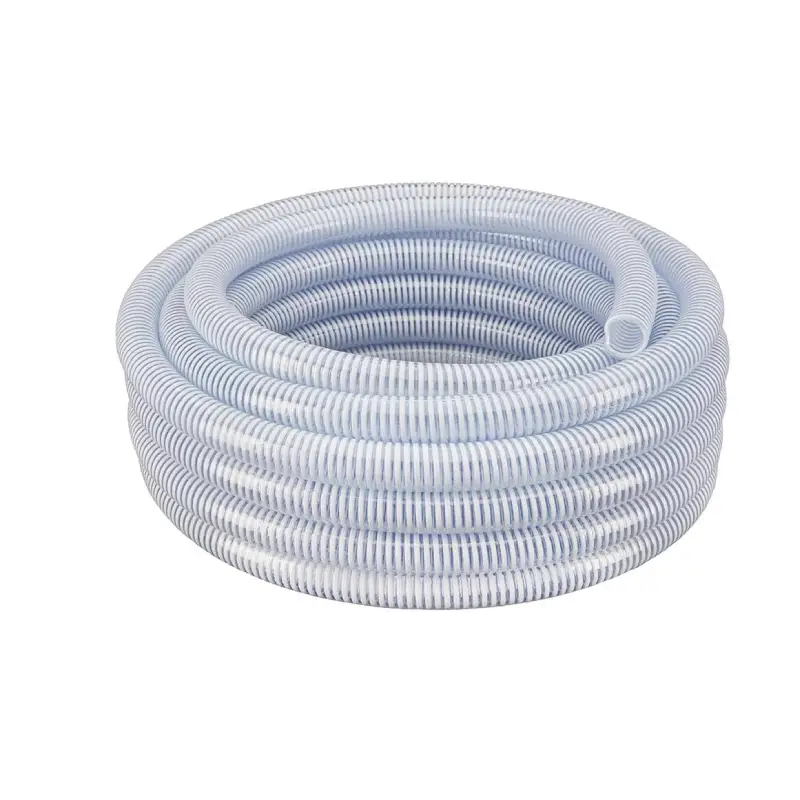
We offer versatile flexible PVC clear suction and discharge hoses, expertly designed for efficient fluid transfer. Featuring a robust white helix for enhanced crush resistance and full vacuum capabilities, these hoses allow for visual flow inspection. Lightweight and durable, they are ideal for agricultural, industrial, and construction applications, ensuring reliable performance in various conditions.
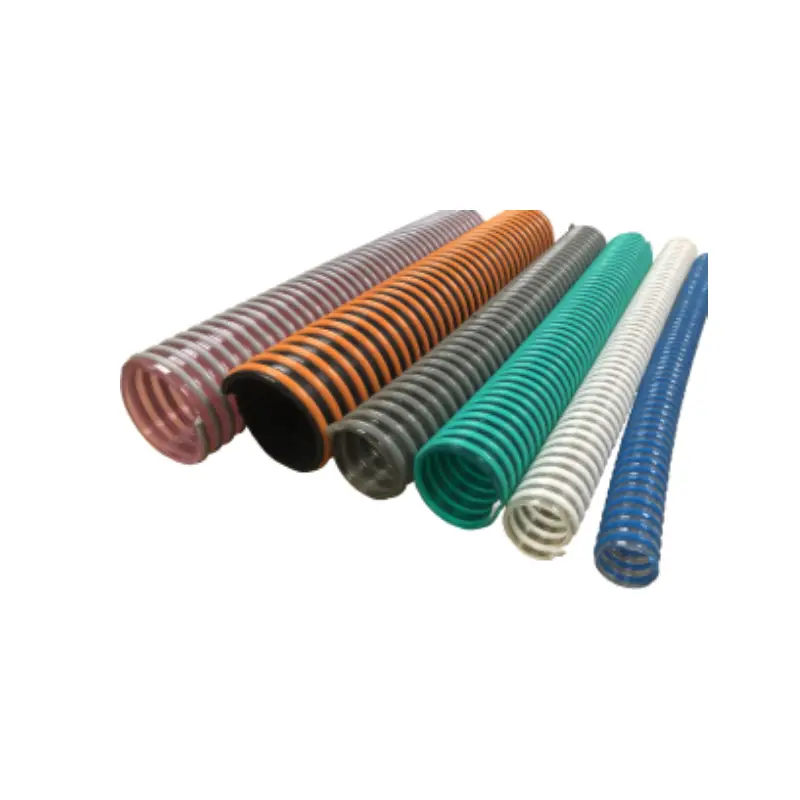
We offer durable PVC Corrugated Rigid Helix Suction & Discharge Hose, ideal for various fluid transfer needs. Constructed with a rigid PVC helix, it provides excellent crush resistance, flexibility, and smooth internal flow for efficient suction and discharge. Perfect for agriculture, construction, and industrial applications, this hose ensures reliable performance with good chemical and abrasion resistance.
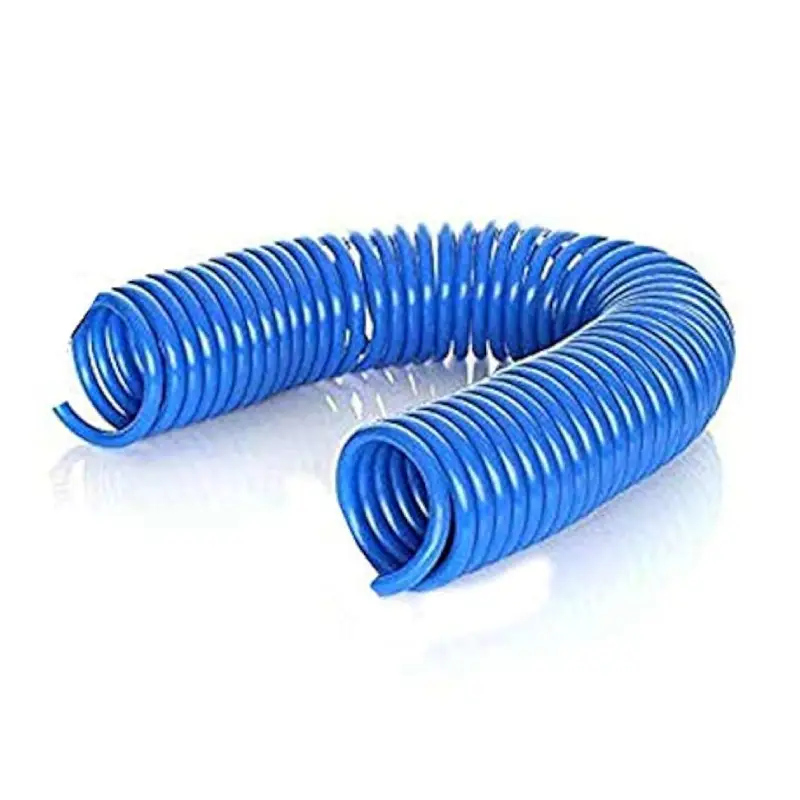
Our Polyurethane (PU) helical hoses are engineered for exceptional abrasion resistance and durability. The tough PU wall, reinforced with a rigid helix, makes them perfect for conveying highly abrasive materials like grains, pellets, and sawdust. They also offer good chemical resistance and maintain flexibility even in colder temperatures, ensuring reliable performance in demanding applications.
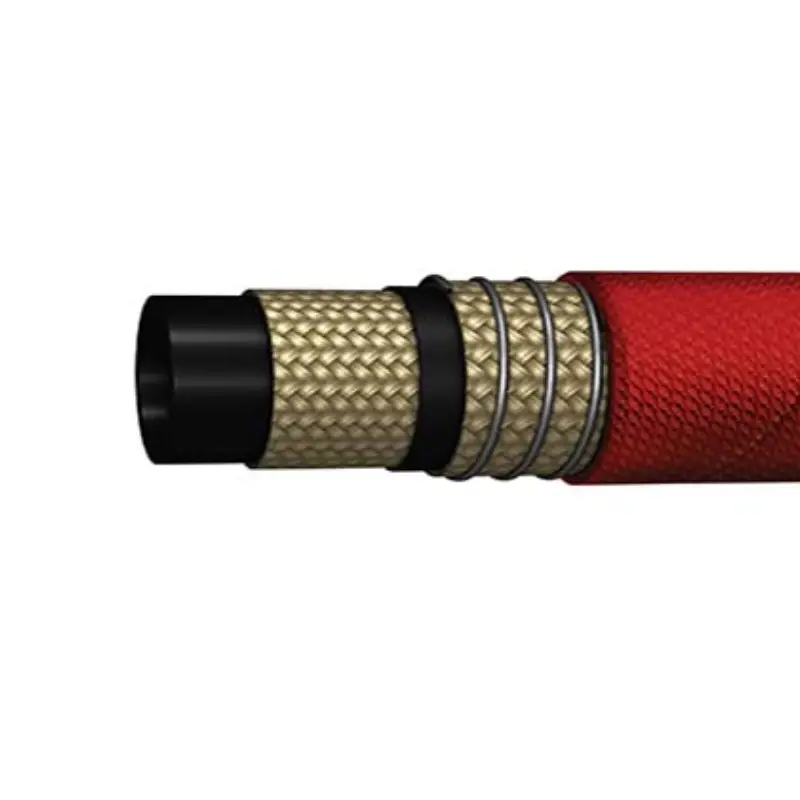
We offer specialized steam hoses with helical wire reinforcement, engineered for the rigorous demands of high-temperature and high-pressure steam transfer. The internal helical wire provides exceptional vacuum resistance and kink prevention, while robust EPDM rubber ensures resistance to heat, aging, and ozone. These hoses are critical for safe and efficient operation in industrial cleaning, processing, and heating applications.
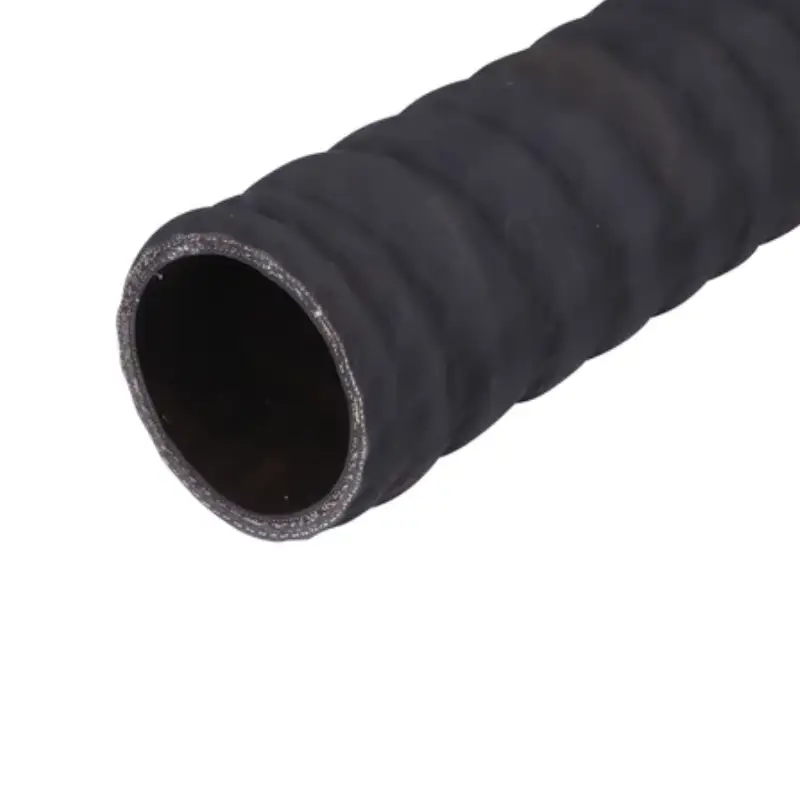
We offer robust rubber helical hoses, engineered for demanding applications. These hoses feature a highly durable rubber compound reinforced by a strong internal helix, typically steel wire. This construction provides exceptional flexibility, superior vacuum and crush resistance, and excellent abrasion tolerance. They are ideally suited for suction and discharge of abrasive materials, slurries, and various fluids in construction, mining, and agricultural industries, ensuring reliable performance in tough conditions.
A helical hose is a type of flexible tubing characterized by its continuous, spiral-shaped corrugations or reinforcement. Unlike annular hoses which have parallel, ring-like convolutions, helical hoses feature a single, continuous “screw thread” design running along their length.
This unique construction, often achieved by winding a reinforcing material (like a rigid plastic helix or steel wire) into the hose wall, provides excellent crush resistance, good flexibility, and in some cases, enhanced flow characteristics due to a smoother internal bore.
Helical hoses are commonly used in applications requiring good vacuum resistance, material transfer, and scenarios where flexibility and durability against external forces are paramount.
Helical hoses are broadly categorized by the material used for their construction, which dictates their performance characteristics and suitability for various applications. The continuous spiral reinforcement, whether internal or external, provides distinct advantages in flexibility, crush resistance, and often, smoother flow compared to other hose types.
Here are some common types of helical hoses based on their material composition:
PVC Helical Hose: These are popular for their excellent flexibility, transparency (allowing visual flow monitoring), and cost-effectiveness. The rigid PVC helix embedded in a flexible PVC wall makes them ideal for light-duty suction and discharge of water, dilute chemicals, and some dry materials.
Polyurethane (PU) Helical Hose: Known for their exceptional abrasion resistance, durability, and tear strength, PU helical hoses are often used for conveying abrasive media like grains, pellets, sawdust, and slurries. They offer good flexibility and can maintain performance in colder temperatures.
Rubber Helical Hose: These hoses are built for heavy-duty applications, offering robust construction with a durable rubber wall and typically a steel wire helix. They provide superior vacuum resistance, crush resistance, and can handle abrasive slurries and various fluids in demanding industrial, construction, and agricultural settings.
EVA Helical Hose: Characterized by their lightweight nature and high flexibility, EVA (Ethylene Vinyl Acetate) helical hoses are excellent for vacuum systems, dust collection, and light material transfer. Their smooth interior bore helps optimize flow and prevent material buildup.
High-Temperature Helical Hose (e.g., Silicone, Specialty Thermoplastics): Designed to withstand extreme temperatures, these hoses are often constructed from materials like silicone or specialized thermoplastics with a reinforced helix. They are crucial for applications involving hot air, fumes, or high-temperature materials in industries such as automotive, aerospace, and processing.
Metal Helical Hose: Made from stainless steel or other alloys with a helical corrugation, these hoses offer exceptional temperature and pressure resistance, chemical compatibility, and can handle extreme conditions. They are often used in demanding industrial applications where other materials would fail.
Helical hoses are highly versatile and find application across a wide array of industries due to their unique balance of flexibility, crush resistance, and often, smooth flow characteristics.
They are particularly well-suited for situations requiring the transfer of abrasive materials, excellent vacuum capabilities, or where a hose needs to withstand external forces while maintaining its structural integrity.
Here are common areas where helical hoses are used:
Material Handling: Frequently employed for suction and discharge of bulk materials like grains, pellets, sawdust, powders, chips, and even abrasive slurries in agricultural, woodworking, and manufacturing industries.
Vacuum and Suction Applications: Their robust helical reinforcement prevents collapse under negative pressure, making them ideal for industrial vacuum cleaners, dust collection systems, and transfer lines requiring strong suction.
Ventilation and Fume Extraction: Used in air conditioning systems, ventilation ducts, and fume extraction setups in factories, workshops, and commercial buildings due to their flexibility and ability to handle air and light gases.
Construction and Mining: For conveying concrete, cement, gravel, and other aggregates, as well as dewatering applications where durability and resistance to abrasion are crucial.
Liquid Transfer (General Purpose): Suitable for water transfer, drainage, and irrigation in various settings, especially when a flexible and relatively lightweight hose is needed.
Chemical and Petrochemical (Specific Types): Depending on the material composition (e.g., specialized rubber or metal), helical hoses can be used to transport certain chemicals or petroleum products, offering resistance to corrosion and specific temperatures.
Food and Beverage (Specific Types): Helical hoses made from food-grade materials are used in processes requiring hygienic transfer of liquids and some dry food products.
Choosing the right helical hose is crucial for optimal performance, safety, and longevity in your specific application. It involves a systematic evaluation of several critical factors to ensure the hose’s characteristics align with the operational demands.
A mismatch can lead to premature failure, costly downtime, and potential safety hazards.
Here are the key factors to consider when selecting a suitable helical hose:
Media Compatibility: This is paramount. The hose material (both the inner tube and the helix) must be chemically compatible with the substance being conveyed (liquid, gas, abrasive solids, etc.) to prevent degradation, corrosion, or contamination. Consider both internal and external exposure to chemicals.
Temperature Range: Evaluate both the maximum and minimum temperatures the hose will experience, both from the conveyed media and the ambient environment. Extreme temperatures can affect the hose’s flexibility, strength, and overall lifespan.
Pressure Requirements: Determine the maximum working pressure, including any potential pressure spikes or surges, as well as vacuum ratings. The hose must be rated to safely handle these pressures to prevent bursting or collapsing.
Application and Flexibility: Consider how the hose will be installed and used. Factors like bend radius, continuous flexing, vibration, and external abrasion all influence the ideal hose construction and material. A dynamic application will require a more flexible hose than a static one.
Diameter and Length: The internal diameter (ID) affects flow rate and pressure drop. Choose an ID that allows for efficient flow without excessive turbulence. The length must be sufficient for proper routing without undue strain or kinking.
End Connections: The type of fittings or couplings required for integration into your system is crucial. Ensure compatibility with existing equipment to facilitate a secure and leak-free connection.
The fundamental difference between helical and annular hoses lies in the orientation of their corrugations or convolutions. This design choice significantly impacts their flexibility, pressure rating, manufacturing process, and suitability for various applications. While both are types of corrugated hoses designed to provide flexibility, their internal structure sets them apart.
Helical Hose:
Annular Hose:
Choosing Kingdaflex helical hoses means opting for superior performance in fluid transfer, especially where dual functionality is required. Our hoses are expertly engineered with a critical internal spiral wire. This design ensures maximum structural integrity to prevent collapse under high vacuum while delivering reliable pressure resistance for discharge applications.
Exceptional Vacuum Resistance: The rigid, embedded helical steel wire acts as a backbone, providing unparalleled crush-proof integrity. This allows our hoses to maintain a perfectly round inner bore, ensuring smooth, non-turbulent flow even under the deepest suction pressures from powerful pumps.
High Burst Pressure Capability: Beyond their suction prowess, our hoses are reinforced with textile braids to handle significant positive discharge pressure. This dual-resistance means a single Kingdaflex hose can efficiently perform both intake and delivery functions, enhancing system versatility and simplifying inventory.
Superior Durability and Longevity: We use advanced, high-grade synthetic rubber compounds for the inner tube and cover. This formulation provides excellent resistance against abrasion, environmental ozone, and weathering, substantially extending the hose’s service life in the harshest industrial and agricultural settings.
Optimized Flow Efficiency: The carefully designed smooth inner bore, protected by the external helical structure, minimizes friction and flow restriction. This results in maximum volumetric efficiency and reduced energy consumption for the pump, lowering overall operating costs for our customers.